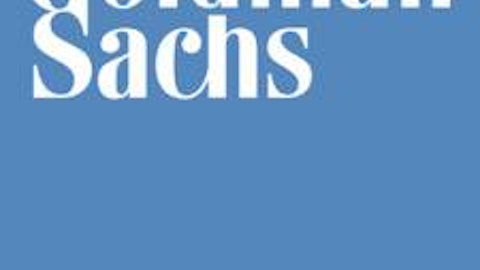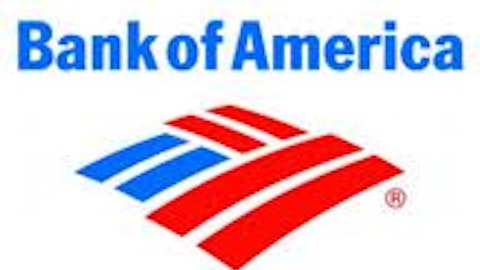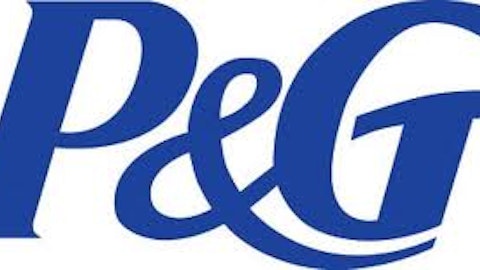At long last, it seems as if shareholders in Bank of America Corp (NYSE:BAC) finally have a tangible reason to celebrate. After the market closed on Thursday, the Federal Reserve announced the results of this year’s comprehensive capital analysis and review, or CCAR, giving B of A and others permission to increase the amount of capital they returning to shareholders over the next four quarters. In B of A’s case, that means using $5 billion for share buybacks and an additional $5.5 billion to redeem all of the outstanding shares of two of the company’s preferred stock.

Making it even sweeter was the fact that two of the Charlotte-based bank’s fiercest competitors were put on notice about the adequacy of their capital planning processes, and two additional banks had their capital plans outright rejected. With respect to the former, while the Fed was careful to point out that it did not object to the capital plans of Goldman Sachs Group, Inc. (NYSE:GS) and JPMorgan Chase & Co. (NYSE:JPM) , it is nevertheless requiring them to submit new plans by the end of the third quarter in order to remedy the aforementioned inadequacy. By all indications, meanwhile, B of A seems to have sailed through the process.
What about the dividend?
Of course, the biggest question is why didn’t B of A increase its dividend like so many analysts, me included, had expected it to? Last October, I stated that “all of the evidence suggests to me that B of A will be in a position to increase its dividend at the beginning of next year after submitting its capital plan to regulators.” In the middle of December, noted banking analyst Meredith Whitney said basically the same thing, predicting that the bank could as much as quadruple its payout. And in an article I wrote earlier this week, a reader commented that: “I think everyone will be shocked if B of A doesn’t get at least a $0.03/share dividend…. [T]he real question will be how soon it can go higher.”
The answer to this question is threefold. First, it obviously appears as if CEO Brian Moynihan sees more value in buybacks than he does in dividends right now. This is probably because B of A’s shares trade at a 10% discount to tangible book value compared to, say, Wells Fargo & Co (NYSE:WFC) , which trades for a 60% premium over tangible book, or JPMorgan Chase & Co. (NYSE:JPM), which trades for a 27% premium.
Second, Moynihan is clearly preparing the bank for the heightened capital requirements that are coming down the pike. In explaining his capital strategy to Fortune‘s Shawn Tully back in 2011, Moynihan divided the then-future into two main periods. During the first period, lasting for two years, he said that B of A would retain “virtually all of its earnings to build the funds necessary to comply with the new Basel III [capital standards].” B of A has now accomplished this, sporting the highest Basel III tier 1 common capital ratio of the four too-big-to-fail banks — as a side note, the following chart shows the progression of its Basel I tier 1 common capital ratio through last week’s stress tests and the CCAR process.

Source: Comprehensive Capital Analysis and Review 2013: Assessment Framework and Results.
And last but not least, during the second stage of Moynihan’s strategy, he said that the bank plans on returning “all earnings to investors in dividends or share buybacks.” The normally reticent CEO was particularly keen to note that, “We need to get back most of the shares we issued in the crisis that caused all the dilution.” What he’s referring to here is the fact that between the end of 2007 and now, the bank’s outstanding share count increased by a factor of 2.5.
Moynihan’s decision to use buybacks as opposed to dividend aside, however, it’s important to note the magnitude and likely impact of the permission. There are a few different ways to put this into context. If the $5 billion buyback were instead committed to dividends, for instance, that would equate to a roughly $0.50 per share each year in payouts, including the current $0.04 that it pays out now. At Thursday’s closing price of $12.11 per share, that translates into a not insignificant 4.1% yield. And speaking just in terms of buybacks, at that same price, the $5 billion program would allow B of A to repurchase 3.82% of its outstanding stock. In addition, the $5.5 billion committed to redeeming preferred shares will save the bank upwards of $470 million a year in payments thereon.
At the end of the day, in turn, while some shareholders may be disappointed with B of A’s decision to forgo a dividend increase in lieu of a repurchase program, the performance of the bank’s shares in after-hours trading last night should help cushion the blow. Unlike Goldman Sachs and JPMorgan Chase & Co. (NYSE:JPM), both of which are seeing their shares fall, B of A’s shot up by more than 4% at certain points. Consequently, at least for the time being, the powers that be are clearly content with the move.
The article Proof That Ben Bernanke Loves Bank of America originally appeared on Fool.com and is written by John Maxfield.
John Maxfield owns shares of Bank of America. The Motley Fool recommends Goldman Sachs and Wells Fargo. The Motley Fool owns shares of Bank of America, JPMorgan Chase, and Wells Fargo.
Copyright © 1995 – 2013 The Motley Fool, LLC. All rights reserved. The Motley Fool has a disclosure policy.



